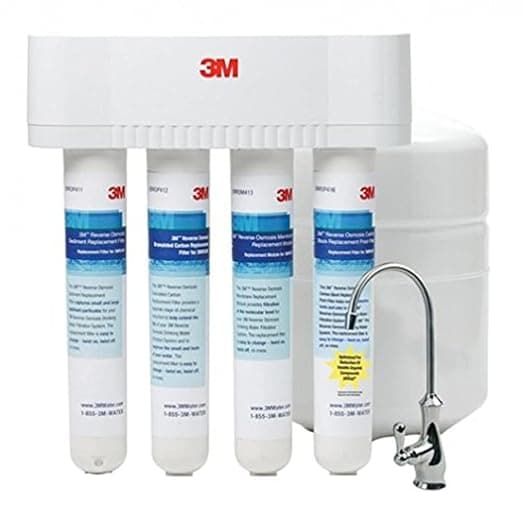Albuquerque Tap Water Quality Report
Albuquerque's water has 8 contaminants above EPA MCLGs. We recommend using a certified water filter.
Utility
ALBUQUERQUE WATER SYSTEM
People Served
659,736
MCL Violations
0
Last Updated
Sep 3, 2025
Is Albuquerque Tap Water Safe to Drink?
Albuquerque's water has 8 contaminants above EPA health-based guidelines. We strongly recommend using a certified water filter to reduce exposure to these contaminants. Check our filter recommendations below for NSF-certified options that can remove the specific contaminants found in Albuquerque's water.
The data below shows test results from ALBUQUERQUE WATER SYSTEM, which serves 659,736 people in the Albuquerque area. Water quality testing is conducted regularly and reported to the EPA. This report was last updated Sep 3, 2025.
Albuquerque Water Quality Test Results
Key Water Quality Metrics
Contaminants Detected
⚠️ Contaminants Above EPA MCLG (8)
Lead
What is Lead?
Naturally occurring heavy metal commonly found in tap water
Health Effects
Health protective benchmarks for oral exposure to lead are based on delays in physical or mental development for children and infants, and impacts to the kidneys and high blood pressure for adults. Children are especially susceptible to the effects of lead. Even low levels of lead can damage the brain and nervous system, slow development, and lead to problems with learning, behavior, hearing, and speech. In adults, lead can lead to hypertension, reproductive problems, neurological disorders, decreased kidney function and muscle and joint pain. Exposure to lead can also cause anemia and impact the immune system for both children and adults. The EPA classifies lead as a probable human carcinogen.
Affected Organs
Common Sources
Arsenic
What is Arsenic?
Naturally occurring element that has both inorganic and organic forms
Health Effects
The EPA drinking water standards for arsenic are based on adverse effects to the cardiovascular, pulmonary and liver systems in drinking water with inorganic arsenic, as well as an increased risk of cancer. Long term health effects of total arsenic in drinking water include bladder, GI tract, kidney, liver, lung, pancreas and skin cancer, cardiovascular effects, pulmonary and gastrointestinal effects, ocular, immunological, neurological and reproductive effects. Arsenic found in epidemiological studies include developmental effects, socioeconomic and genotoxicity.
Affected Organs
Common Sources
Bromodichloromethane
What is Bromodichloromethane?
Member of trihalomethanes (THMs) that form in water treated with chlorine
Health Effects
Health protective benchmarks for BDCM are based on carcinogenicity and liver toxicity observed in animal studies. The EPA has classified BDCM as a probable human carcinogen. Results from animal studies also suggest that kidney, immune system, spleen, and developmental toxicity are associated with exposure to BDCM. BDCM has been shown to produce DNA changes (genotoxicity) in laboratory studies.
Affected Organs
Common Sources
Uranium
What is Uranium?
Uranium is a weakly radioactive heavy metal found naturally in bedrock and used in nuclear weapons, some ceramics, electron microscopy stains, photography toners, and certain fertilizers. Uranium is weakly radioactive because all of its isotopes (Uranium-234, Uranium-235, and Uranium-238) are unstable. Ninety-nine percent of naturally existing uranium is in the isotope form uranium-238. The EPA has established a maximum contaminant level for uranium in drinking water in response to human and animal studies indicating kidney toxicity and and increased risk of cancer.
Health Effects
Health protective benchmarks for uranium are based on adverse kidney system effects observed in both humans and animals and an increased risk of cancer. Animal studies have also shown female reproductive system and developmental toxicity, as well as genotoxicity, related to uranium exposure.
Affected Organs
Common Sources
Dibromochloromethane
What is Dibromochloromethane?
Member of trihalomethanes (THMs) that form in water treated with chlorine
Health Effects
Health protective benchmarks for DBCM have been developed based on liver toxicity and carcinogenicity observed in animal studies. EPA has classified DBCM as a possible human carcinogen based on animal evidence, while IARC (International Agency for Research on Cancer) says it is unclassifiable as a human carcinogen. Kidney toxicity has also been associated with DBCM based on evidence from animal studies. DBCM has been shown to produce DNA changes (genotoxicity) in laboratory studies.
Affected Organs
Common Sources
Total THMs
What is Total THMs?
Group of contaminants that form in drinking water systems when a disinfectant, typically chlorine, reacts with organic matter
Health Effects
Drinking water standards for total THMs are based on evidence of carcinogenicity in human and animal studies, as well as liver and kidney toxicity observed in animal studies. Individual THMs have been further associated with developmental, immune, spleen, and genotoxicity.
Affected Organs
Common Sources
Chloroform
What is Chloroform?
Member of trihalomethanes (THMs) that form in water treated with chlorine and is generally the most abundant THM formed in drinking water
Health Effects
Health protective benchmarks for chloroform have been developed based on kidney and liver carcinogenicity observed in animal studies, and liver toxicity observed in occupational studies. The EPA classifies chloroform as a probable human carcinogen based on animal evidence, and there is additional epidemiological evidence that may increase the risk of colon and bladder cancer in humans. Results from animal studies also suggest that exposure to chloroform can cause liver, developmental and immune toxicity. Acute exposure to low levels of chloroform will cause nervous system toxicity.
Affected Organs
Common Sources
Lithium
What is Lithium?
Lithium is a soft, silvery-white metal that belongs to the alkali metal group. It is highly reactive and flammable, and must be stored in mineral oil. Lithium is used in batteries, mood-stabilizing drugs, and other applications.
Health Effects
Exposure to lithium can lead to a range of health effects, including nausea, diarrhea, tremors, and in severe cases, lithium toxicity can cause kidney damage and neurological issues.
Affected Organs
Common Sources
Understanding the Data
This data comes from your local water utility testing. The bar charts compare detected levels against EPA's Maximum Contaminant Level Goal (MCLG). Contaminants above the MCLG are shown by default and may require filtration. All other tested contaminants are within safe levels and can be viewed by expanding the section above.
Recommended Water Filters for Albuquerque
Based on Albuquerque's water quality data, these NSF-certified filters are recommended to remove contaminants above EPA MCLGs.

Solventum Purification Inc.
3MRO401
NSF Certified:
Daily Production
11.48 gpd
Removes 15 contaminants:
Arsenic, Barium, Cadmium, Chromium (Total), Chromium (VI) +10 more

Solventum Purification Inc.
3MRO301
NSF Certified:
Daily Production
11.48 gpd
Removes 15 contaminants:
Arsenic, Barium, Cadmium, Chromium (Total), Chromium (VI) +10 more

Whirlpool Corporation
W11256135
NSF Certified:
Capacity
1001 gal
Filter Life
3 mo
Flow Rate
0.7 gpm
Removes 19 contaminants:
1,2 Dichlorobenzene, 1,4 Dichlorobenzene, 2,4-D, Asbestos, Atrazine +14 more

Whirlpool Corporation
W11569861
NSF Certified:
Capacity
1001 gal
Filter Life
3 mo
Flow Rate
0.52 gpm
Removes 22 contaminants:
1,2 Dichlorobenzene, 1,2,4 Trichlorobenzene, 1,4 Dichlorobenzene, 2,4-D, Asbestos +17 more
Frequently Asked Questions About Albuquerque Tap Water
Albuquerque's water has 8 contaminants above EPA MCLGs. We strongly recommend using a certified water filter to reduce exposure to these contaminants. Check our filter recommendations below for NSF-certified options that can remove the specific contaminants found in Albuquerque's water.